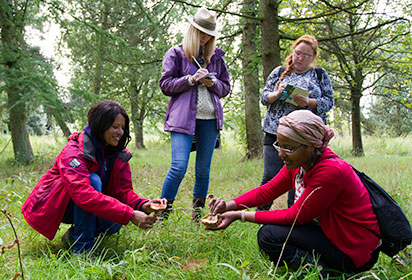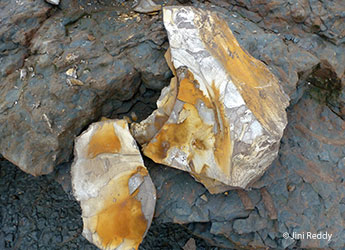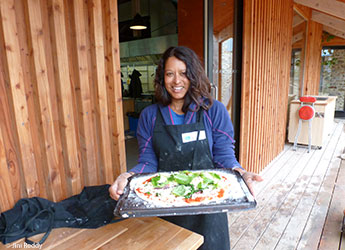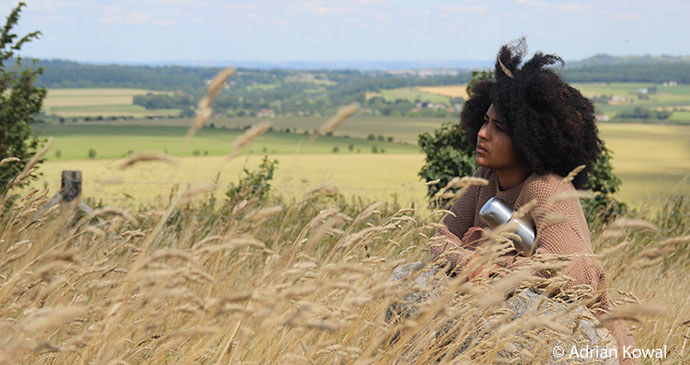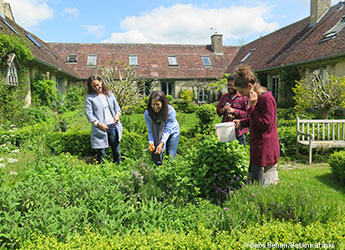Written by Jini Reddy

1 A full-moon meander – feel the lunar magic on a moonlit wander
A full moon, shining in a clear night sky. How often have you craned your neck for a glimpse when this celestial body is at its peak? The moon is undeniably compelling and magical. Since ancient times it’s been the stuff of myth, the setting of tales and the inspiration for worship. Man has even stood upon it. Yet rarely do even the most ardent of nature lovers among us set out on a walk at nightfall with the light of the moon to guide us. More’s the pity. For nature is different at night. We are different.
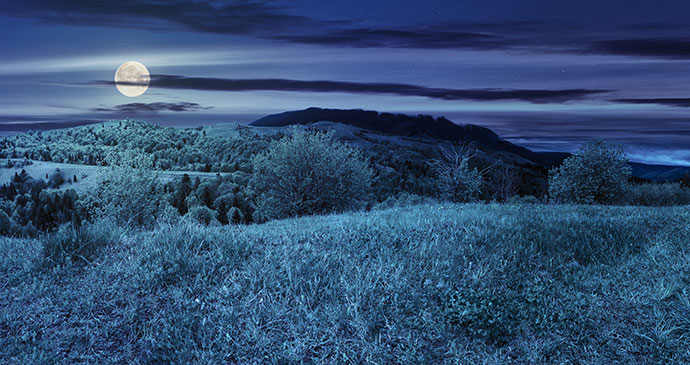
In the witching hours our perspective on the world changes. A familiar landscape becomes terra incognita, full of shadows, bumps, textures and unfamiliar sounds and smells. At night, we experience both a velvety tranquillity and an unsettling strangeness than can crystallise into fear at the faintest of noises. The night, unquestionably, is a realm ripe for exploration; a journey into the unknown. And there is no surely no better way to experience its poetry than on a full-moon hike.
2 The art of horse whispering – natural bonding with equine companions
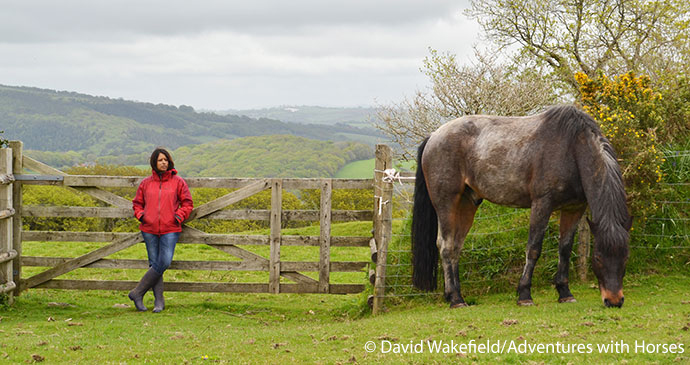
There’s something magical about the relationship between humans and horses. Over the centuries our equine friends have helped us to farm, hunt, ride and holiday. But wild herds or retired horses aside, rarely are horses allowed to roam freely and to live as a herd animal, as nature intended. By the same token, rarely do we get to spend time with horses without jumping into the saddle. But what could be better than ‘joining’ a herd and learning the compelling art of horse whispering — walking shoulder to shoulder with our equine friends, connecting with them as sentient beings in their natural environment? Find your inner calm, approach the horses with trust and patience, and the art of horse whispering will gently reveal itself to you.
3 The ancient coastal paint palette – creating art the Neolithic way
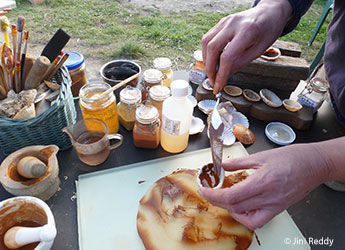
© Jini Reddy
Most of us will have enjoyed Britain’s coastline with a bucket and spade in hand, but what about with a pestle and mortar instead? How about making paints and dyes from the ochre you find in old mining caves in the cliffs and on rocks? The earth, we seem to have forgotten, is an artist’s apothecary. But our ancestors understood this well. Ochre was one of the first paints used by man. A 70,000-year-old ochre cave painting found in South Africa is thought to be the oldest work of art in the world. And the best bit? You absolutely don’t have to be an artist to enjoy this: today is all about the beach adventure and the slow, sensuous enjoyment of the doing, not the end product.
4 Rewild a forest – bringing an ancient landscape back to life
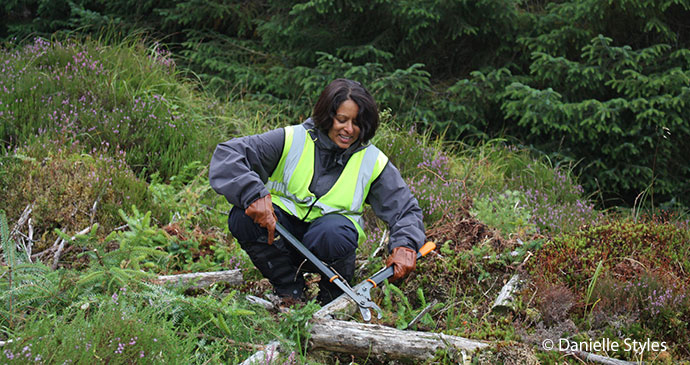
Rewilding is a movement gaining momentum in Britain, focusing on the idea that in giving nature a helping hand we can breathe life back into ourselves. Close your eyes: imagine land, stripped of its natural riches, ecologically damaged, with little biodiversity and many species in dramatic decline. Now imagine that same land, carpeted with green grass, alive with native trees, birdsong, butterflies, insects, plants and wild animals – this is what can happen when you give nature a helping hand.
5 A barefoot walk – feeling the land beneath your feet
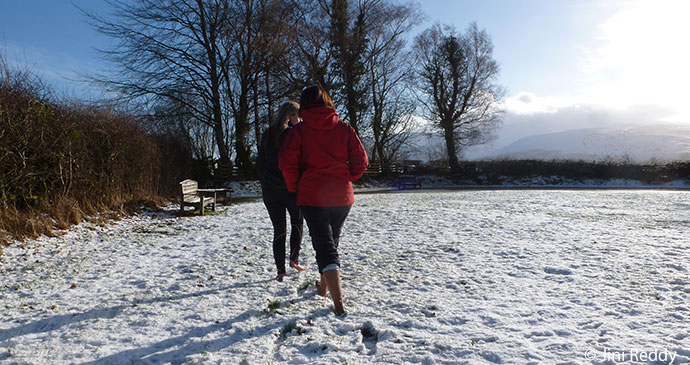
Connecting with nature doesn’t have to be complicated – in fact, it can be as simple as taking off your shoes. People from indigenous cultures who live close to the land and spend their lives barefoot often talk of experiencing a reciprocal relationship with nature. It’s one that most of us in the West have lost – but that many are increasingly eager to regain. And it seems more and more of us want to experience the energy, knowledge and primal wisdom that comes from the earth. It’s an intense and exhilarating sensation.
6 A weekend working on the land – reconnecting with the soil
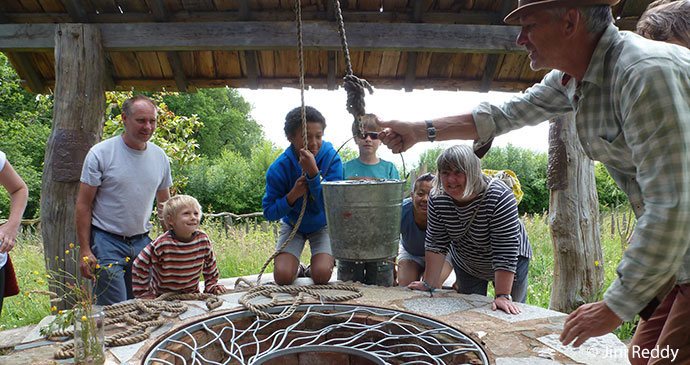
Twenty hectares of land. On them, a lake, a well, woods, orchards, ponies, sheep, plump chickens, buzzing bees, vegetable gardens, old-fashioned rope swings and endless wild nooks and crannies for daydreaming. All in the Devon countryside. A fantasy? Not if you fancy lending a handing on a weekend at this unusual sustainable education centre and farm just outside Dartmoor National Park. It’s one of those special places where both nature and people come first.
7 Birding in the urban jungle – finding a city’s feathered delights
Connecting with nature in the city can at times feel like a contrary pursuit. Nature is certainly here, though. Rural dwellers may dismiss cities as concrete, cars, pollution and little else, but this is patently untrue: urban landscapes are home to gardens, parks, allotments, nature reserves, meadows, woods and rivers, all teeming with wildlife. It’s worth remembering that a wild thing is no less wild for not being in a pristine setting. Try telling an urban fox otherwise!
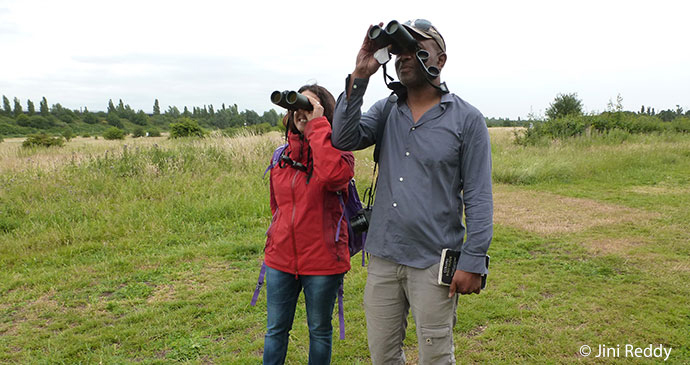
There’s a whole world unfolding in our urban skies and green spaces and we should make time to explore it. Grab your binoculars and scan the urban skies – it doesn’t matter if you can’t identify the species, just enjoy the birds, their songs and the surroundings.
8 Build an earth oven – building, cooking and feasting the ancient way
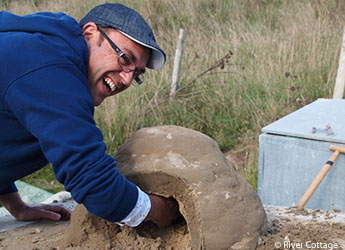
© River Cottage and Jini Reddy
Making an earth oven is a tactile, physical experience. You can’t help but marvel at nature’s bounty and the ingenuity of our ancestors when you’re eating food that’s been cooked in a vessel you’ve made with clay that you’ve dug from the earth. Then there’s the glorious feasting at the end, partaken with those who’ve laboured with you. A true communion.
9 The nature quest – a solo communion with nature
© Adrian Kowal/Way Of Nature
A solo fast in the wild: I can’t think of a more raw, direct way to plunge headlong into nature. This is a traditional rite of passage within indigenous cultures: you immerse yourself in the elements, without food (as fasting is said to sharpen the senses), and return filled with insight and a sense of wonder reignited. Solitude, self-reliance, the relinquishing of phones, radios, watches: all make for a true adventure that you’ll remember – for the right reasons – for the rest of your life. When you’re without food or familiar props the boundaries between yourself and the natural world fall away.
10 A walk with wolves – a wild and intimate lupine encounter
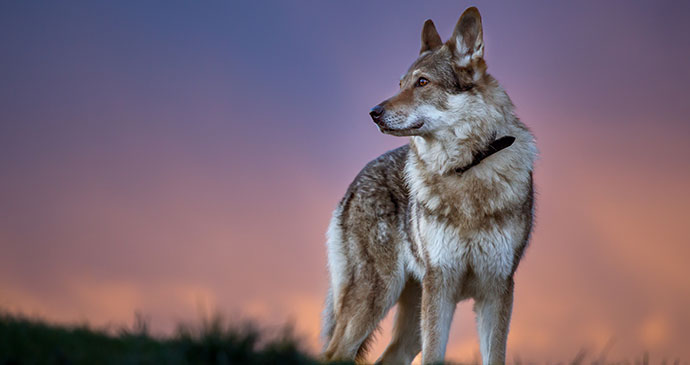
A lick, lick and a sniff, sniff – this is likely to be your first encounter with your lupine companions on a short hike in a quiet woods with two passionate advocates of rewilding and animal conservation who have an encyclopaedic knowledge of wolf behaviour. They’re keen to spread the word about all the good things wolves contribute to biodiversity. And you can briefly join the pack.
11 A colour walk and botanical dyes – harvesting and harnessing the colour dyes of nature
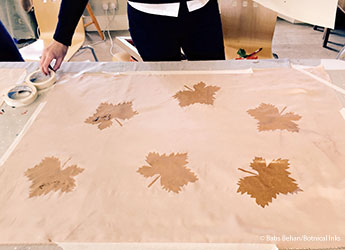
© Babs Behan/Botanical Inks
Britain is rich in natural colour, be it the magenta produced by a blackberry or the dark brown to black the husk of a walnut tree yields. Harness these hues by learning the art of natural dyeing. Forage for dye plants on a wild colour walk, and use the orangey-red created by rosemary or the greyish-green that nettles produce to turn organic silk into a natural scarf . Even if you aren’t ‘good’ at art, you’ll find your creative self-expression shines through.
12 Forest skills day – from wood whittling to fire skills
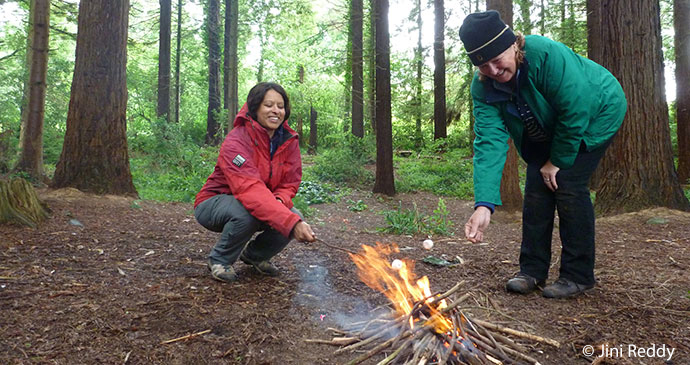
In Britain these days you’d have to struggle not to find a bushcraft course. But finding one where the goal isn’t to equip yourself for an SAS-style expedition can be a challenge. But there’s more to the art of bushcraft than simply surviving in the wild – it’s an opportunity to connect with earth’s gifts and truly appreciate the spirit of the forest. By slowing down and taking the time to understand the natural world, we can awaken an inner sense of wild, too often stifled in daily life.
13 A mindful beach walk – silence and serendipity by the sea
Mindfulness is simply about drawing our attention to our experience in the present, without being caught up in thoughts of the past or future. You might go for a walk but if you’re spending the whole time thinking about what you’re having for dinner you won’t necessarily catch the reflection of the light off the water or notice the flora and fauna around you.
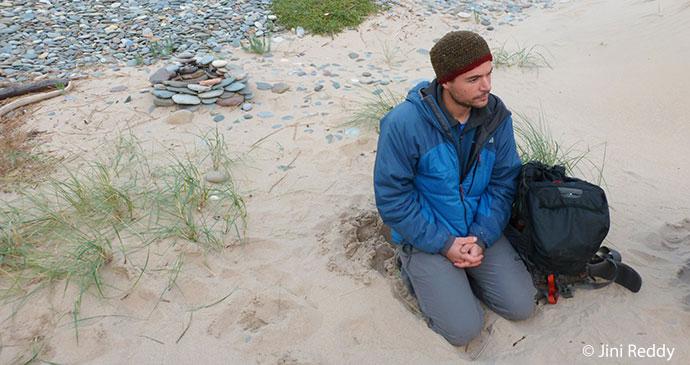
Outdoors, the practice allows us the time and space to notice minute details: the dew drops on a cobweb, the veins on a leaf, the waving of branches, the millions of shades of green in the grasses. It maximises our appreciation of the natural world and allows us to be totally immersed in it.
14 A bumblebee safari – sharing the buzz with nature’s furriest pollinator
How does one safari with bumblebees, you may ask? With a butterfly net in hand, through wildflower-rich meadows and preferably in the company of children, so as to share their uninhibited curiosity in one of the most extraordinary and precious of nature’s creatures.
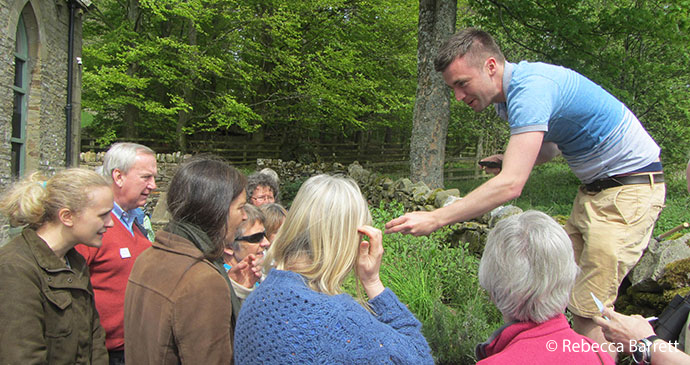
15 An island escape – marooned in glorious isolation
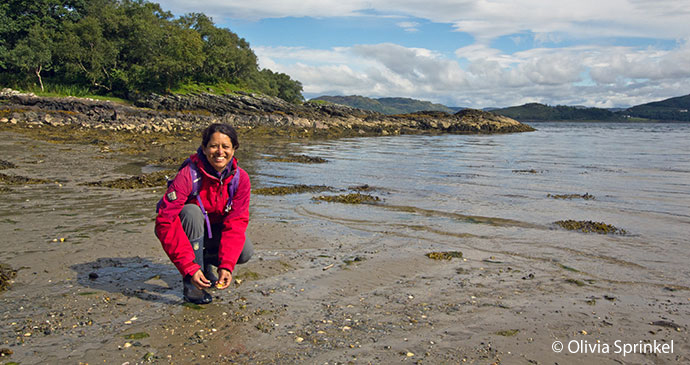
16 The ‘No-Dig’ Garden day – getting green fingers the way nature indended
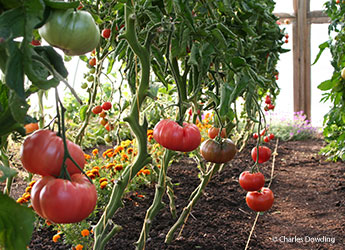
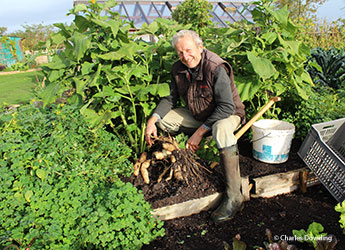
17 Natural navigation – abandoning map and at-nav to follow nature’s clues
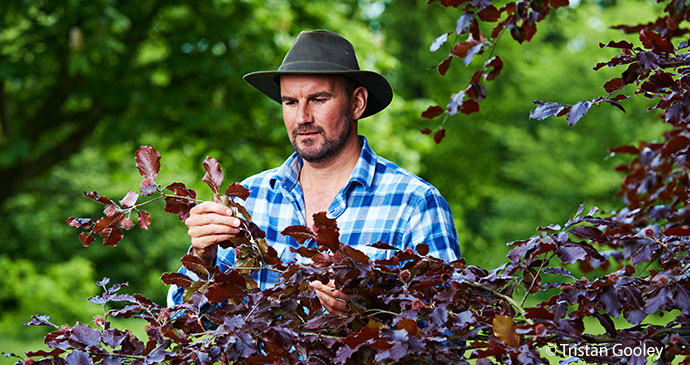
If you are a dab hand with map, compass or GPS, you may think you are a whizz at navigation. But what if you had to find your way without these aids? What if you’d like to navigate with nature alone as your guide? Imagine the magic you’d bring to your life: the sharpening of your senses; the trust you’d develop, both in yourself and the landscape around you. The land is a living map, its signposts the landscape features and elements: sky, wind, clouds, sea, hills, trees, plants, flowers, moss, leaves, puddles, birds, even insects.
18 Wild food by sea kayak – paddling the coast in search of wild bounty from the ocean
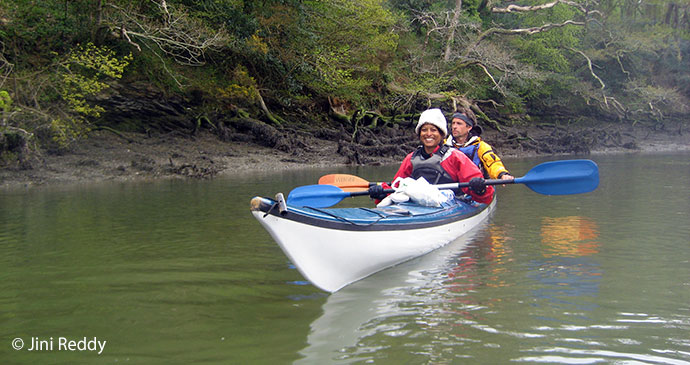
Foraging on land among our abundant hedgerows is a fantastic experience, as enlivening for the senses as it is to the palate. But using a sea kayak to discover the rich harvest of edible seaweeds, molluscs, fish and coastal plants in and around the clean waters of our coastline adds a rich new dimension to the experience.
19 The hawk walk – sharing the world with a free-flying raptor
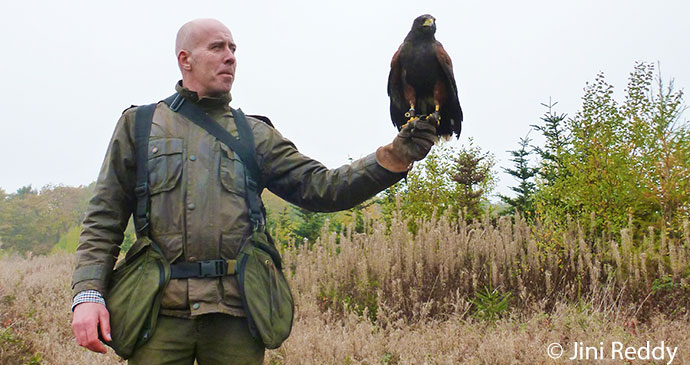 © Jini Reddy
© Jini Reddy20 Wild medicine – forging a deeper connection with plants
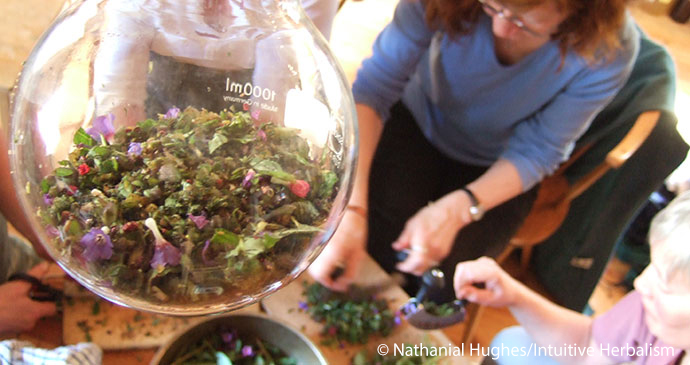 © Nathaniel Hughes/Intuitive Herbalism
© Nathaniel Hughes/Intuitive Herbalism 21 Deer rut safari – taking a ringside seat for the battle of the antlers
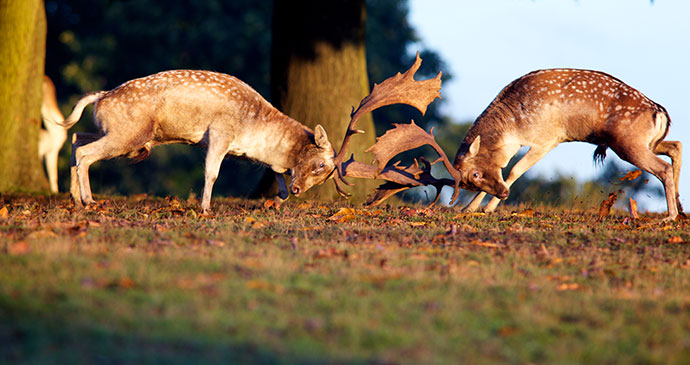 © Mark Bridger
© Mark Bridger 22 A forage and a feast – foraging for mushrooms, berries and other wild treats
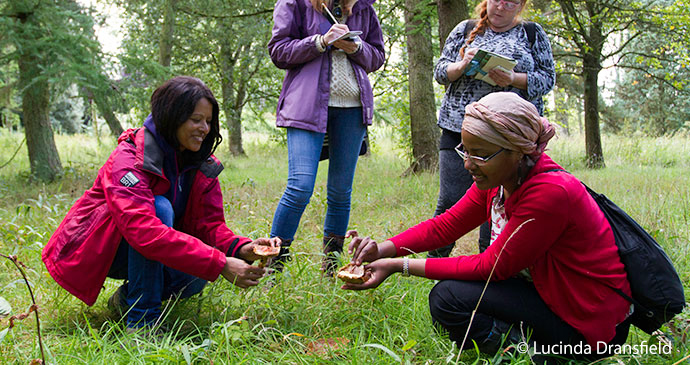
23 A slow paddle in search of otters – a canoe safari with a night under the stars
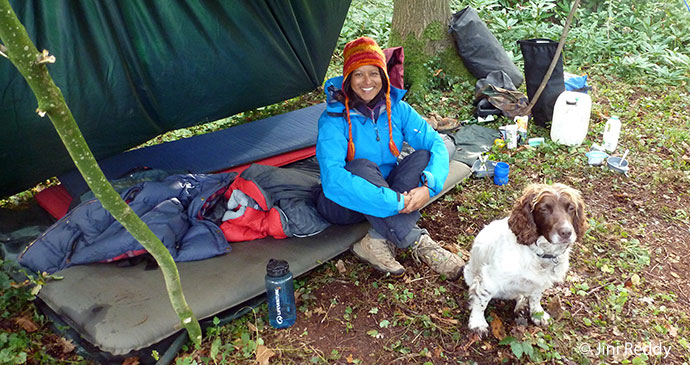
When you’re on the river, you’re not just observing things; you’re a part of the scene. You glide between grassy banks, reed beds, overhanging trees and marshes like a giant amphibian. And, if you choose your season well, you might not see another soul. It’s all about slowing down, not clocking up the mileage. At every bend in the water a new scene unfolds: one minute, you’re ducking your head under a bridge and checking the arches for otter poo – or ‘spraint’ as it’s called; the next you’re gliding past an arboreal guard of honour. Scan the muddy banks for tell-tale webbed footprints, nature detective hat firmly clamped on, before setting up camp for the night: there are few more poetic ways to connect with nature than with a night under the stars.
24 Dark-sky gazing – watching true darkness bring the heavens to life
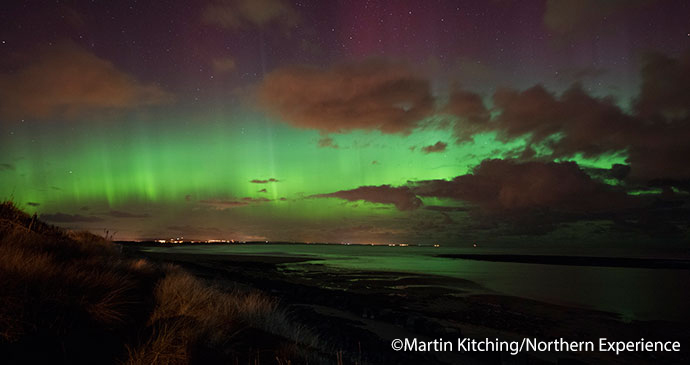
25 Prehistoric outdoor cookery – hot stones, pit ovens and Stone-Age cuisine
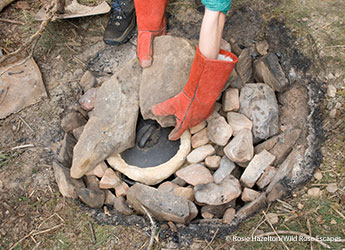
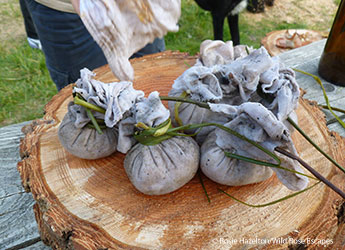
26 A wild pottery weekend – clay excavation and wild pottery in the woods
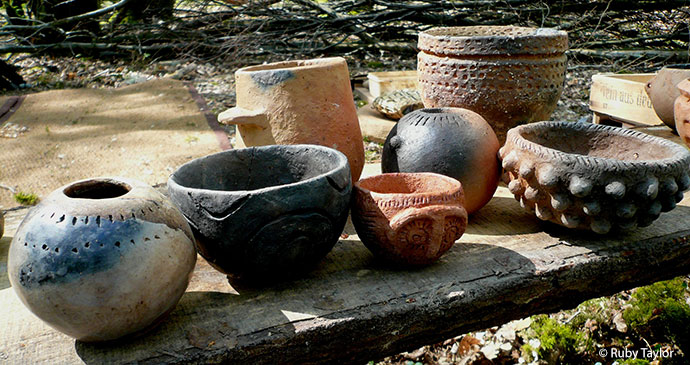
The rich gifts of the earth are often just beneath our noses – what better way to appreciate them than to get people involved in creating something beautiful from nature, in a sustainable way, whilst spending slow time in a beautiful wood? Once you have dug for your clay, make your material fire resistant. It might sound like a chore, but here in the woods, working in pairs, it has a creative, meditative feel. Crafting quietly in nature reminds us of how madly fast-paced our lives have become – take this as an opportunity for a digital detox.
